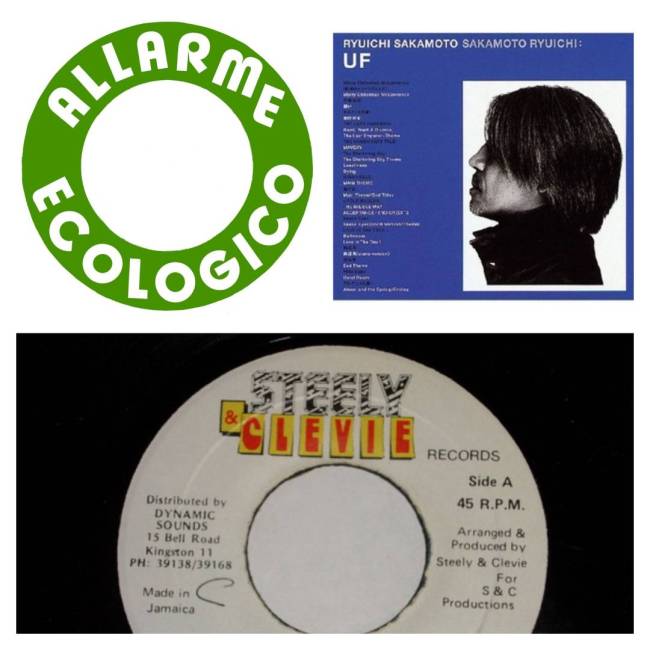Evan Nabavian’s YouTube algorithm is chaotic good.
Royal Space Force: The Wings of Honneamise is an anime from 1987 about an army trying to achieve manned spaceflight. The ramshackle space program must overcome engineering challenges and threats from a rival army, but also the listlessness of its own recruits. The soldiers of the Space Force yawn at exhortations from their superiors and roll their eyes at military dress, killing time until they can hit the red light district. Royal Space Force is a far cry from Mobile Suit Gundam and Neon Genesis Evangelion with their futuristic technology and ever-present danger.
The anime’s soundtrack is a footnote in the career of Ryuichi Sakamoto. Gainax studio boss Toshio Okada said in a 1996 interview that he selected Sakamoto because Royal Space Force’s structure required a more sophisticated soundtrack than the pop themes that composers typically created for anime. Sakamoto’s score often feels like a pared back Yellow Magic Orchestra record in its synthy instrumentation and tone. It’s buoyant and colorful as it follows the misadventures of an oafish, would-be astronaut. Midway through, there is a scene at the defense department that reveals the cynical machinations of the military brass. It turns out the upcoming launch is a ploy to provoke an attack from the neighboring Republic. Here, the soundtrack turns moribund: an anemic wind instrument, feeble staccato strings, claves or woodblocks with no rhythm or resonance. It beggars belief that the man who made “Rydeen” and “Thousand Knives” could create an atmosphere so chilling and sparse.
Sakamoto rarely discussed Royal Space Force later in life, perhaps because of creative disputes during the movie’s production. That same year, Sakamoto produced the score for The Last Emperor for which he won an Oscar. The motion picture academy can have The Last Emperor, safe and traditional; spacefarers can have “National Defense Department,” challenging and alien.
The Italian library music composer Antonino Riccardo Luciani had a simple yet alluring gimmick that he employed on a few records. He would pair a gorgeous impressionistic instrumental with a drum machine. “Preludio verso il nulla” from 1973’s Allarme Ecologico features an elegiac piano accompanied by rapid fire shakers and bongos that are definitely electronic in origin. He does this elsewhere are Allarme and he also did it to great effect on his 1971 record Panorami Attuali on songs like “Zona industriale” where a horn snakes its way around similarly futuristic drums. The juxtaposition is striking despite how simple it is. Luciani’s dalliance with drum machines in the early ’70s meant he was ahead of the curve. Sly and the Family Stone’s There’s a Riot Goin’ On came out in November of 1971 and brought the drum machine to the forefront of popular music through its use of the Maestro Rhythm King.
Like many of his peers in the realm of library music, Luciani has a composition that escaped obscurity. His piece “Chanson balladée” was the theme for the Italian news program Almanacco del Giorno Dopo for more than a decade. It does not have the backing of a drum machine which likely would have been too progressive a motif for the evening news.
See our primer on Italian library music here.
The most poorly preserved and documented genre of interest to this column is dancehall. Discogs and RateYourMusic often come up short for less popular artists and YouTube is unlikely to have every 7” cataloged by reggae databases. Often, the only ways to hear a record are to cough up for the vinyl or barter with uncharitable hoarders on Soulseek. Likewise, there is no Wikipedia article to explain the provenance of Steely & Clevie’s schizophrenic version of “Them a Talk.”
In brief,
“Them a Talk” is an obscure record by Simpleton who is best known for his record “Coca Cola Shape.”
It’s only available online in snippets (here, here, and here) and in this butchered version from his album Heaven Reach Me.
The record is based on the Ting A Ling riddim which is a sunny little melody from a Heptones record produced by Coxsone Dodd from the late ’60s. There is also an earlier cut without the melody.
Simpleton’s record was produced by the prolific Steely & Clevie who released it on their label, likely in the early ’90s. They used Ting A Ling at least two more times on “I Do Love You” by Jack Radics and “Yard Man Run Things” by Leroy Smart.
Simpleton barks all over “Them A Talk” like a coarser Shabba Ranks. The record’s obscurity is perhaps deserved among the hundreds of singles from Steely & Clevie. However the generosity of a YouTube user allows us to hear the version from the B-side. The typical dub dials back the vocals and applies some reverb and echo effects, but Steely & Clevie loop and overdub Simpleton’s vocals beyond coherence. The vocal tracks become subatomic particles in a collider, smashing against each other and struggling to reconstitute into a rational whole.
The most avant garde beatmakers in 2025 would blush at making a track so chaotic. Through the various mutations of the Jamaican musical tradition, a velvety rocksteady groove became a violent and delirious dub.


